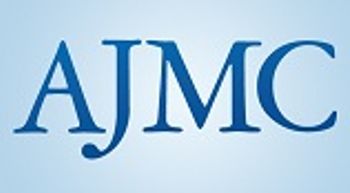
Enrollment in new Obamacare exchanges may be lagging, but experts said Thursday that the health law's massive expansion of Medicaid could place more than 8 million low-income people in the program before the first year is up.

Enrollment in new Obamacare exchanges may be lagging, but experts said Thursday that the health law's massive expansion of Medicaid could place more than 8 million low-income people in the program before the first year is up.

There is no question that the number of accountable care organizations in Medicare and total cost of care contracts in the private sector is growing, along with the amount of care provided under these contracts.

Competition over healthcare prices and quality is coming. Transparency and the radical redesign of health insurance benefits will be its handmaiden. Companies such as General Electric are leading the way.

Reference prices, a health benefit strategy that requires patients to pay costs above a set price, may save employers and patients money, but their potential may be limited-perhaps even more so under the Patient Protection and Affordable Care Act.

The Affordable Care Act has dramatically increased the cost of buying a health insurance plan on the individual market in California, Texas, Florida, New York, Illinois, Georgia, and North Carolina, states that account for more than half of America's uninsured adults.

Reigning in costs is a key component of healthcare reform. So it is clear why it will be essential for both providers and policy makers to identify those most at risk for driving up costs.

Much of the healthcare spotlight has been squarely focused on the federal and state implementation of the Affordable Care Act (ACA). Yet, there is another fundamental shift in policy that is occurring at the private level that will change the way health insurance is offered to consumers.

Almost 80 million people with employer health plans could find their coverage canceled because they are not compliant with ObamaCare, several experts predicted.

Balancing competing goals of innovation and regulatory oversight will influence the evolution of the vendor market for certified ambulatory electronic health record products.

Another day brings another delay for the federal health law known as the Affordable Care Act.

In what is likely to be a relief to dialysis providers, the CMS decided to phase in the controversial payment cut to dialysis providers over a three- to four-year period.

The Obama administration plans to push back by a month the second-year start of enrollment in its health program to give insurers more time to adjust to growing pains in the U.S. law, a move that may stave off higher premiums before the 2014 congressional elections.

Adopting the 5 core medication management elements of meaningful use electronic medical records reduces adverse drug events and saves costs.

As Americans have begun shopping for health plans on the insurance exchanges, they are discovering that insurers are restricting their choice of doctors and hospitals in order to keep costs low, and that many of the plans exclude top-rated hospitals.

You get what you pay for: That old saw applies to most corners of American consumerism, but not to healthcare. Convincing people of that is tough.

Capping federal Medicaid spending, raising the eligibility age for Medicare, and bundling Medicare payments to healthcare providers are some of the federal spending reduction possibilities included in a report by the Congressional Budget Office released Wednesday.

Finding a health plan on the Medicare website could be troublesome for some seniors.

Estimates from the nonpartisan Congressional Budget Office are considered the gold standard in Washington.

About 8,000 Washington residents will soon receive letters informing them that the price they are expecting to pay for health insurance purchased on the new online exchange marketplace is incorrect.

Millions of people could qualify for federal subsidies that will pay the entire monthly cost of some health care plans being offered in the online marketplaces set up under President Obama's health care law, a surprising figure that has not garnered much attention, in part because the zero-premium plans come with serious trade-offs.

A multi-part session titled Stroke in Atrial Fibrillation: A Preventable Condition was begun by Michael D. Ezekowitz, MB, ChB, DPhil, of the Lankenau Institute for Medical Research. In his presentation titled All Novel Agents are Preferred to Warfarin, he discussed the benefits of novel anticoagulant agents.

Atrial Fibrillation, the Epidemic of Our Time was the first portion of a multi-part session titled Pharmacological and Interventional Options for Stroke Prevention in Atrial Fibrillation. The introduction, titled Multifaceted Approaches to Atrial Fibrillation: From Drugs to Ablation to Left Atrial Appendage Closure, was delivered by Vivek Y. Reddy, MD, professor of medicine in cardiology at Mount Sinai Medical Center.

The first part of the session titled Innovation in Transition: Models, Global Trends, Regulatory Challenges, and Funding Opportunities started with a presentation from John B. Simpson, MD, PhD, chief executive officer at Avinger, Inc, called Individual-Based Innovation. Dr Simpson briefly described the lumivascular approach to treatment of cardiovascular disease, which is image-guided atherectomy.

The disastrous rollout of HealthCare.gov may have another serious problem: A CBS News analysis shows that in many of the 15 state-based health insurance exchanges more people are enrolling in Medicaid rather than buying private health insurance.

Implementation of ICD-10, or the International Statistical Classification of Diseases and Related Health Problems, 10th revision, is on the horizon. This significant, next-generation change in the health information technology field will be used for everything from billing and measuring quality to managing population health.

259 Prospect Plains Rd, Bldg H
Cranbury, NJ 08512
© 2025 MJH Life Sciences®
All rights reserved.
